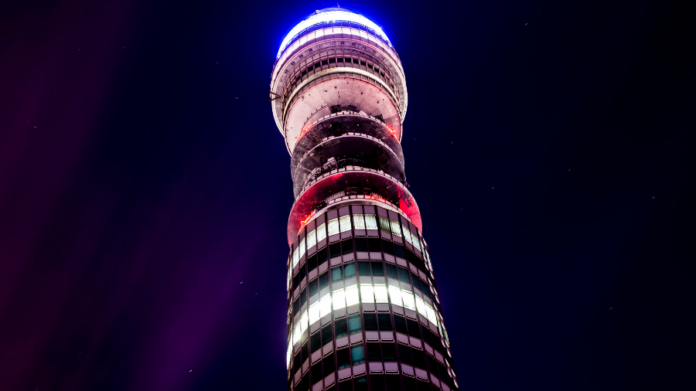In the wake of the pandemic, many UK B2B brands have had to rethink how they engage and support their customers. One high-profile example is BT – the telecoms giant – which over the past year has evolved its brand strategy to focus squarely on business customers.
BT’s transformation wasn’t a full visual rebrand but a strategic refresh of its brand voice, messaging and positioning. This case study examines how BT reshaped its brand with a new platform, ‘We’ve Got Your Back’, why this shift made sense in a post-Covid market, how the change was rolled out across touchpoints, the early results, and key lessons for B2B marketers in today’s UK landscape.
Background and challenge
BT’s heritage and the new reality: BT is one of the UK’s most iconic brands – in fact, it’s the UK’s sixth most valuable brand – with a legacy in telecom services spanning consumer and enterprise markets. However, by 2023 BT faced a brand challenge. The world had changed drastically during the Covid-19 pandemic: businesses of all sizes underwent rapid digitalisation, remote working surged, and expectations for connectivity and IT support grew. BT’s brand needed to keep pace with these changes. Internally, BT Group had made a strategic decision to simplify its brand architecture – BT would henceforth serve as the flagship business brand, while the EE brand would front all consumer offerings. This meant BT’s identity had to be sharpened exclusively for a B2B audience.
The challenge: BT was a heritage brand that now needed to ‘think like a challenger’ to stay relevant. Competitors (from agile tech startups to other telecom providers) were pitching themselves as innovative partners for the digital era, and BT could not rest on its laurels. Post-pandemic, customers (from SMEs to large corporates) expected more than basic telecom services – they needed a trusted partner to navigate ongoing digital challenges (cybersecurity threats, hybrid work, cloud adoption, etc.). The perception hurdle was that BT, with its long history, might be seen as a traditional telco provider rather than a forward-thinking digital ally. In short, BT’s brand story needed a reboot to reflect a new value proposition: that BT ‘has your back’ in the increasingly complex, digital-first business world.
What changed and why
New brand narrative – BT ‘means business’: To meet this challenge, BT reinvented its brand messaging around a clear central promise. In late 2023, the company developed a new brand platform and tagline: ‘We’ve Got Your Back’. This slogan encapsulates BT’s evolved narrative – positioning BT firmly on the side of its business customers. Instead of talking about products or technology in the abstract, BT’s messaging shifted to reassurance and partnership. The rationale was that every business today is a digital business, and thus every business needs a reliable digital partner.
At the core of this repositioning was the insight that BT must be seen as more than a supplier – it should be a collaborator that provides the confidence businesses need to thrive. As one summary of the strategy put it, BT’s new campaign “celebrates BT as a partner rather than a supplier, providing the rock-solid digital foundation businesses need to succeed and prepare themselves for whatever comes next.” In other words, BT aimed to shift the conversation from selling telecom services to championing customer success in a post-pandemic, digitally-driven market.
Several factors drove this change. First, pandemic recovery and market changes: after Covid-19, companies large and small realised how critical connectivity, security and remote collaboration are to their survival. BT saw an opportunity (and obligation) to assert that it can bolster businesses against future uncertainties. Second, customer insight: research and feedback likely showed that business customers wanted a provider who ‘has their back’ – i.e. who offers dependable support, simplicity, and peace of mind, not just cables and phones. Third, BT’s brand architecture shift (moving consumer under EE) freed it to craft a distinct voice for business audiences. It was “the start of a new chapter” for the BT brand, and BT intended to make that chapter resonate with contemporary business needs. As BT’s own brand director explained, “today more than ever, connectivity is the lifeblood of commerce” and businesses need resilience for the challenges of today and tomorrow. The ‘We’ve Got Your Back’ platform directly addresses that need for resilience and assurance.
How it was executed
To bring the new brand promise to life, BT rolled out a comprehensive, multi-channel campaign and refresh of customer touchpoints:
- Integrated campaign launch: In March 2024, BT debuted ‘We’ve Got Your Back’ as its first major brand campaign since re-focusing on B2B (and since letting EE take over consumer marketing). Working with creative agency adam&eveDDB (which won BT’s B2B brief in 2023), BT launched an integrated platform that put its business customers front and centre. The campaign ran across TV, social media, digital out-of-home screens, print and online display ads.
- Customer-focused storytelling: The creative approach spotlighted BT’s diverse range of customers, effectively making the customer the hero in each execution. BT’s ads depicted businesses of all shapes and sizes – from sole traders to public services – all relying on BT. This narrative showcased BT’s support for every type of business and reinforced the idea that whatever your business, BT is there as a foundation.
- Consistent message across touchpoints: Beyond advertising, BT applied the ‘We’ve Got Your Back’ theme uniformly across key touchpoints. The BT Business website and product literature were updated to speak in this new voice. This extension of the tagline to different solution areas (cybersecurity, broadband, etc.) ensured the brand promise was reinforced at every customer interaction.
- Emphasis on ‘business’ identity: BT was very explicit in signalling its B2B focus. The word ‘business’ itself is repeated multiple times in campaign content. This helped drive the message home unambiguously.
- Tone and style: The tone of the campaign was optimistic, supportive, and confident – in line with the brand’s promise. Visually, the advertising was vibrant and human-centric, helping humanise BT’s brand and connect emotionally with business owners.
Results and impact
As this transformation is relatively recent, quantitative results are still emerging. However, there are several early indicators of success:
- Clarity and brand focus: BT has likely reduced confusion in the marketplace. Customers now have a clearer understanding that BT = the business connectivity expert.
- Market reception: The campaign garnered significant attention in the marketing and business press, suggesting a positive reception.
- Brand engagement: While specific metrics haven’t been published, early signs indicate the slogan struck a chord.
- Strategic alignment: The brand transformation also set the stage for BT Business to align with emerging growth areas like cybersecurity.
- No immediate quantitative lift (yet): Brand transformations are long games. BT likely views this as a multi-year effort.
Lessons for B2B marketers
BT’s brand transformation offers several practical insights:
- Focus on customer realities: Ground your brand strategy in the current challenges your customers face.
- Don’t be afraid to reinvent a legacy brand: Even well-established B2B brands must evolve with the times.
- Make the customer the hero of your story: Showcase customer stories and outcomes, not just your product features.
- Consistent messaging builds credibility: Ensure your campaign is echoed across all touchpoints.
- Use a multi-channel approach: Business buyers are people too – reach them in unexpected places.
- Align brand change with culture and strategy: Ensure internal culture reflects the brand message.
BT’s brand transformation post-pandemic demonstrates the power of strategic brand evolution in B2B. By re-centreing its story on customer success and adapting to a changed market, BT has strengthened its relevance in the UK business landscape. In a world where business resilience and trust are paramount, crafting a brand that genuinely “has your customers’ back” is not just good messaging – it’s good business.


 Whether you want to learn how to use LinkedIn, X or Facebook for marketing, or need to brush up on business skills like leadership, presentation skills or managing meetings, you will find something to enhance your professional skills with these on-demand courses.
Whether you want to learn how to use LinkedIn, X or Facebook for marketing, or need to brush up on business skills like leadership, presentation skills or managing meetings, you will find something to enhance your professional skills with these on-demand courses.